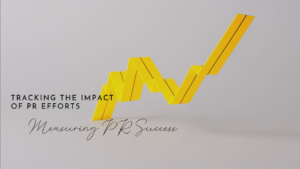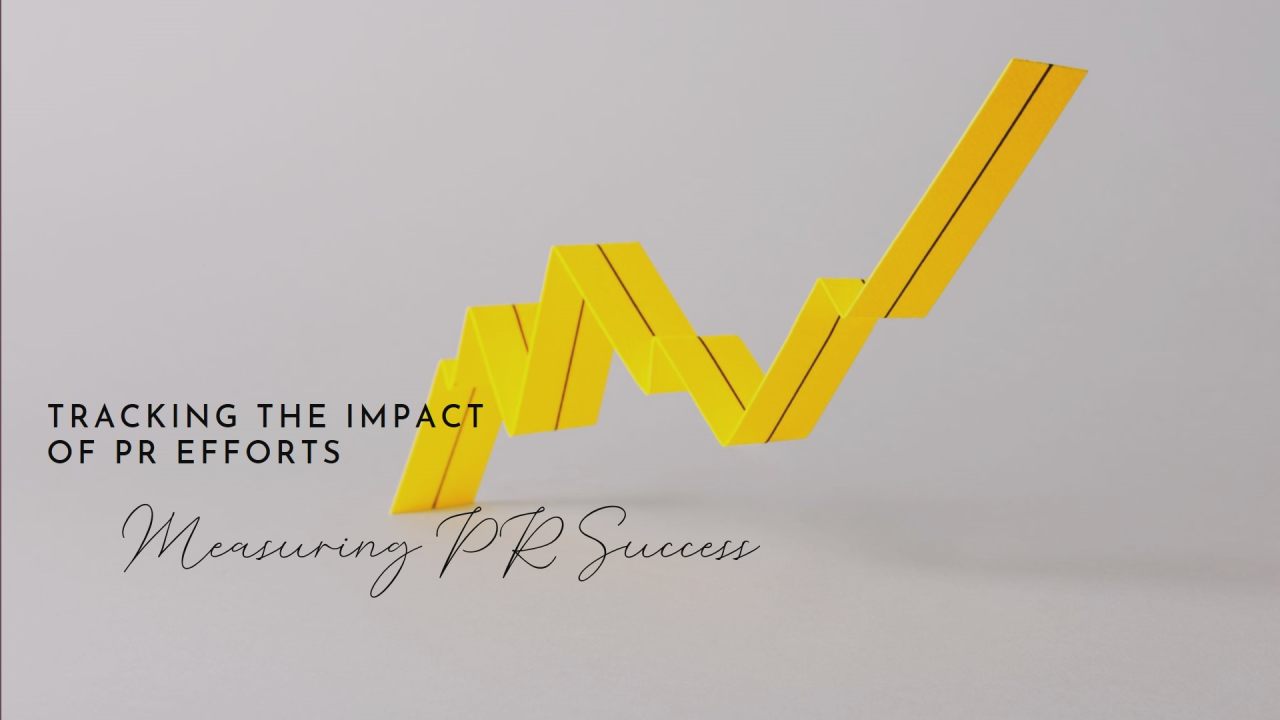New Year, New Metrics: Leveling Up PR Measurement

When it comes to measuring PR performance and its impact to the business, there’s a grey area that seems to keep responsible teams stuck in a rut. Rather a rut in truly defining go-to-market PR success that goes beyond the KPI basics (e.g. press mentions, audience reach).
Outdated methods such as focusing on outputs versus outcomes, or attribution challenges due to lack of knowledge, are still in play. For me, it’s taken years to learn to go beyond the KPI basics to measure PR performance. I took it upon myself to proactively learn and experiment. And I failed, pivoted and had endless conversations to sell and show that PR can contribute to top line revenue just like demand generation can. Let me give you a couple of examples.
For instance, I placed a thought leader contributed article for a healthcare client in a vertical publication, directly reaching decision makers. That single article converted one lead into a five figure MRR customer within just a few months of publishing. And to be fully transparent, it also proved ROI of my retainer services. Win/Win!
And at BigCommerce, I single-handedly transformed how the communications team measured PR performance. Working with the analytics team, I spearheaded a first-of-its-kind PR lead generation dashboard that tracked incoming PR leads through the marketing funnel. The analytics dream team built this Tableau gem using my criteria and goals for what I needed outcomes to be. Essentially, I was able to track PR lead generation and conversions with the goal of tying dollars to business contribution.
The secret sauce? Advanced analytics tools, attribution models and AI technologies entering the PR KPI landscape. This takes measuring PR performance from a playground to an adventure park. Let’s take a high level journey to get you started.
Why Advanced Analytics to Measure PR Performance? 🤔
The modern PR landscape is dynamic and complex. And it’s noisy. Businesses are not only competing to show their value, but also striving to grow market share, build brand equity and establish credibility.
Advanced analytics allow PR professionals to go beyond surface-level metrics. They provide deep insights into which channels and communications strategies yield the best results. By leveraging tools such as Google Analytics, Marketo or Tableau to measure PR performance, you’ll go from data to decisions so much faster.
Advanced Analytics Gives You Agility
With advanced analytics, PR teams can be more agile. They get the flexibility to pivot and gain full insight to understand their true impact. And even better, they will always in a position to:
- Refine Messaging: Amend narratives and positioning to better resonate with specific customer segments. The result? Better engagement and higher conversion rates.
- Optimize Channel Strategy: Redirect efforts and budget towards the most effective channels. Thus improving overall campaign ROI and reducing wasted spend.
- Drive Real-Time Adjustments: With deeper insights into campaign performance, teams can pivot strategies. Hence ensuring that communication is always aligned with evolving customer preferences and behaviors.
- Measure True Impact: Connect PR efforts with business outcomes (e.g. lead generation, customer acquisition and revenue growth). Therefore giving PR teams more gusto to present compelling results that matter to leadership.
Leveraging more granular and insightful data gives PR teams the ability to simply make better decisions. They can also foster alignment with broader business objectives and provide a clearer view of return on investment. Can you scream value?! Undoubtedly, raising the KPI metric bar not only enhances the accuracy of measuring PR performance, but also shines light on PR as a key contributor to business success.
Attribution – The Connector 🙌🏼
Attribution — identifying the specific actions or channels that lead to desired outcomes — can be a tricky area for PR. Subsequently, outbound pitching and the campaign outcomes that come with it (ie., article coverage or podcast interviews), can often take time to manifest.
However, advanced attribution models with analytics tools, and cross-functional team support, can work wonders together. Equally, attribution models help track the customer journey from initial brand exposure to final conversion. And cross-functionally, setting clear parameters and qualification criteria can help establish PR tracking process through the funnel from incoming through conversion.
Let the Attribution Models Work For You
There are several attribution models (which can be another article on its own). Below are the three most commonly used in measuring PR performance based on my personal experience. Furthermore, it is worth noting that call-to-action (CTA) UTM tags and integrated analytic tools will play a crucial role in grabbing those data insights needed to track the buyers journey.
- First-Click Attribution. This model attributes the entire conversion to the first point touchpoint (e.g. media article or press release that carried the potential customer to learn about the brand). Think top of funnel here. Indeed, this attribution is the ideal place to use UTM tags to CTA URLs to capture key data such as source, campaign and content.
- Last-Click Attribution. This model determines which touchpoint prompts a user to take the desired action. Lest, whether it’s making a purchase, signing up for a newsletter, requesting a demo or any other CTA.
- Multi-Touch Attribution. Multi-touch attribution considers multiple touch points throughout the customer journey. It attributes credit to all relevant touch points that contributed to the conversion (e.g. media article, video post, white paper). While this model has limitations, it provides valuable insights. For instance, identifying high-performing channels, better understanding a customer’s interest and behavior, and more importantly, opening the kimono to further refine and optimize campaigns to perform better.
Remember PR friends, data is your best friend. Start having discussions with your CMO or leadership teams to discover the KPIs that matter most to them. Then you can begin to build your KPIs into your plan. With intention, you set yourself up to showcase results that should raise eyebrows.
Set Yourself Up for Success 🏆
So, you may be asking how do you begin to link PR efforts to business contribution. And specifically top line revenue.
The secret is marrying the tools, teams and goals to make them work for you. You are only as good as the data you keep. As you get more comfortable, you’ll find yourself always evolving your metric KPIs and processes as the business, grows.
- Set Clear, Measurable Goals. Start by defining the specific business outcomes that PR efforts will aim to influence. Then align them with business goals. These could be increasing website traffic, driving product demos, customer acquisition, market expansion, generating leads, or improving brand perception.
- Use Attribution Models. Implement attribution models that connect PR activities to the stages of the sales funnel. By understanding which touch points are most effective in driving conversions, PR teams can optimize their efforts.
- Leverage CRM and Marketing Platforms. Integrating PR efforts with CRM systems (like Salesforce or HubSpot) can help track leads and conversions that result from media coverage or press events. PR teams can work alongside sales and marketing to ensure that their campaigns are aligned with broader revenue goals.
- Monitor Brand Perception. Shifts in brand perception can often precede changes in consumer behavior. Using tools to track and measure brand sentiment can offer valuable insights into how PR is influencing public (and media) attitudes, which can eventually lead to higher sales and customer loyalty.
- Analyze ROI in Real-Time. Real-time data allows PR teams to monitor campaign performance and adjust quickly to better optimize strategies to ensure efforts are driving the greatest possible impact.
The Role of AI in PR Measurement and Attribution 💡
Admittedly, this is an area I am in the trenches with now to better learn and gain more insight to use in my KPI tracking and measurement. Tableau is a great example that already has AI embedded to automatically turn data into insights, and Marketo is another for predictive customer engagement.
On a high level, I see AI predictive analytics as valuable to analyze historical PR data to predict how future PR campaigns might perform. With this, teams are armed to allocate resources more effectively and target high-impact opportunities. Then of course there’s sentiment analysis and content analysis. These optimize headlines and messaging to determine whether they are working or not. The list is long, and I am looking forward to growing and learning more in this area.
Lead the Charge, Not Follow It 🫡
As PR measurement and attribution moves to the forefront, we’ll start seeing a data-driven evolution show that PR efforts have a clear connection to revenue and business success.
In the near future, PR and communications will no longer be seen as a soft, intangible marketing function. It will have a seat at the table, and be considered a core contributor of business growth.

